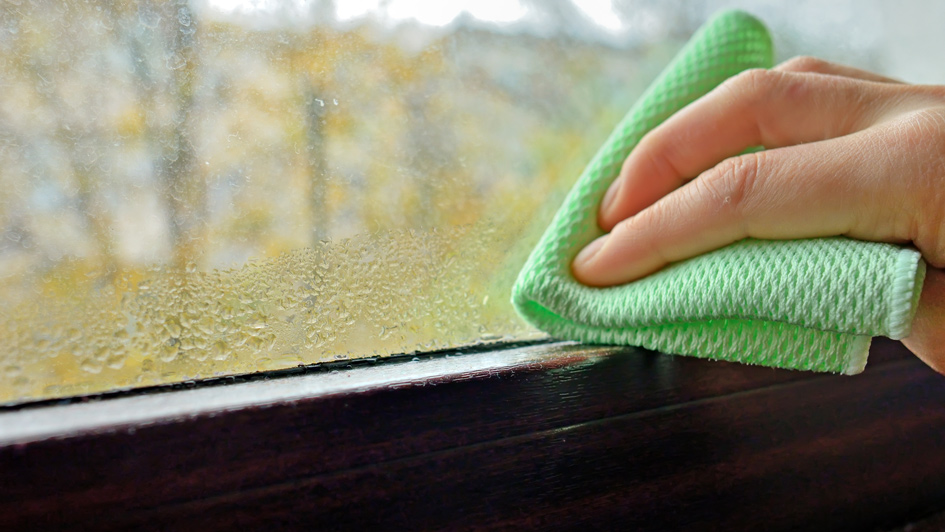
The windows throughout your home open up to the outdoors, a way to draw light in while you appreciate the view of your garden, yard or other surroundings. The last thing you need to see is a sweaty window plastered in a film of condensation.
Not only are windows plastered with condensation unappealing, they also can be evidence of a larger air-quality issue inside your home. Fortunately, there’s several things you can try to correct the problem.
What Produces Condensation in Windows
Condensation on the inside of windows is produced by the moist warm air inside your home hitting the colder surface of the windows. It’s especially commonplace in the winter when it’s much chillier outside than it is in your home.
Inside Moisture vs. In Between Panes
When discussing condensation, it’s important to know the distinction between moisture on the inside of your windows in comparison to moisture in between the windowpanes. One is an air-quality issue and the other is a window issue.
- Moisture within a window is created from the warm moist air throughout your home forming along the glass.
- Existing moisture you notice between windowpanes is produced when the window seal fails and moisture slips between the two panes of glass, and at that point the window should be repaired or replaced.
- Condensation inside the windows isn’t a window problem and can instead be solved by fine-tuning the humidity across your home. Different things produce humidity throughout a home, like showers, cooking, taking a bath or even breathing.
Why Sweating Windows Can Be Trouble
Though you might presume condensation inside your windows is a cosmetic issue, it could also be a sign your home has higher humidity. If that’s the case, water might also be accumulating on window frames, cold walls or other surfaces. Even a thin film of water can cause wood surfaces to mildew or rot over time, increasing the growth of mildew or mold.
How to Reduce Humidity Inside Your Home
Not to worry, because there are various options for eliminating moisture from the air throughout your home.
If you have a humidifier running inside your home – whether it be a small-scale unit or a whole-house humidifier – lower it further so the humidity inside your home goes down.
If you don’t have a humidifier going and your home’s humidity level is excessive, consider purchasing a dehumidifier. While humidifiers introduces moisture inside your home so the air doesn’t dry out, a dehumidifier draws excess moisture out of the air.
Compact, portable dehumidifiers can absorb the water from one room. However, these units require clearing water trays and most often service a small area. A whole-house dehumidifier will extract moisture across your entire home.
Whole-house dehumidifier systems are controlled by a humidistat, which enables you to set a humidity level precisely like you would select a temperature with your thermostat. The unit will start immediately when the humidity level surpasses the set level. These systems coordinate with your home’s HVAC system, so you will receive the best results if you contact qualified professionals for whole-house dehumidifier installation Manassas.
Other Ways to Lower Condensation on Windows
- Exhaust fans. Putting in exhaust fans in humidity hotspots including the bathroom, laundry room or above the stove can help by drawing the warm, humid air from these spaces out of your home before it can raise the humidity level across your home.
- Ceiling fans. Turning on ceiling fans can also keep air swirling throughout the home so humid air doesn’t get trapped in one spot.
- Opening up window treatments. Throwing open the blinds or drapes can decrease condensation by preventing the humid air from being caught against the windowpane.
By lowering humidity inside your home and dispersing air throughout your home, you can enjoy clear, moisture-free windows even during the winter.






